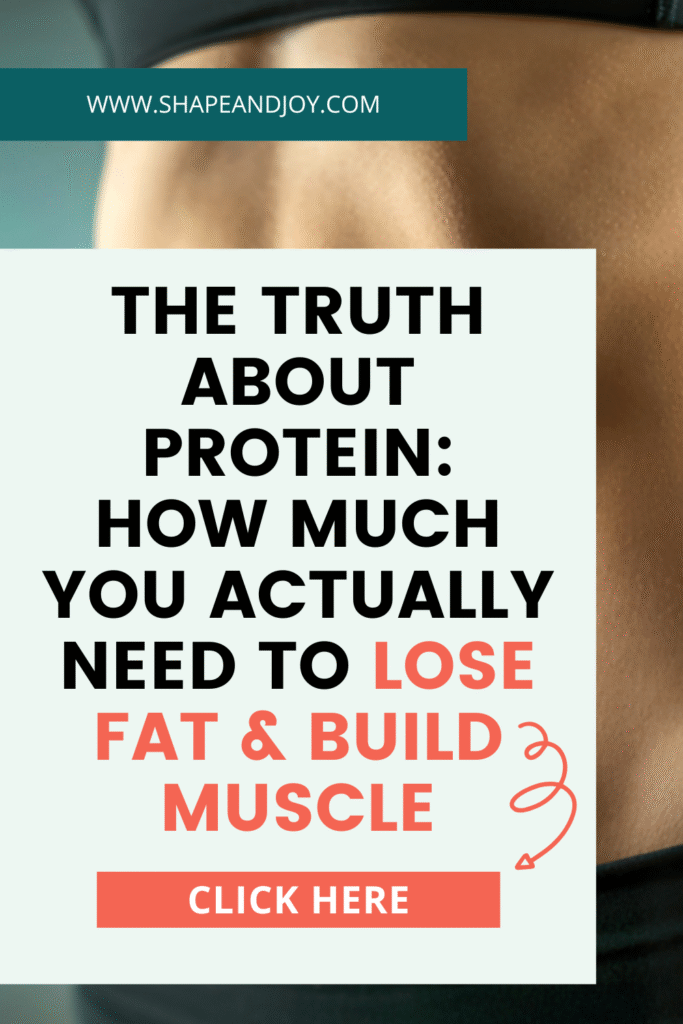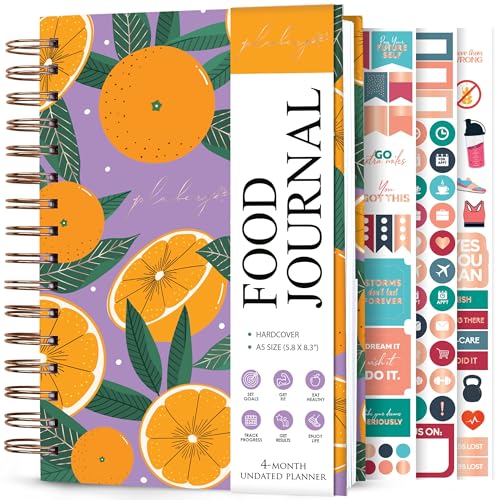This post may contain affiliate links, which means that I may earn a commission if you click on the link, with no cost for you. It’s one of the ways I support my blog. You can read more about this here.
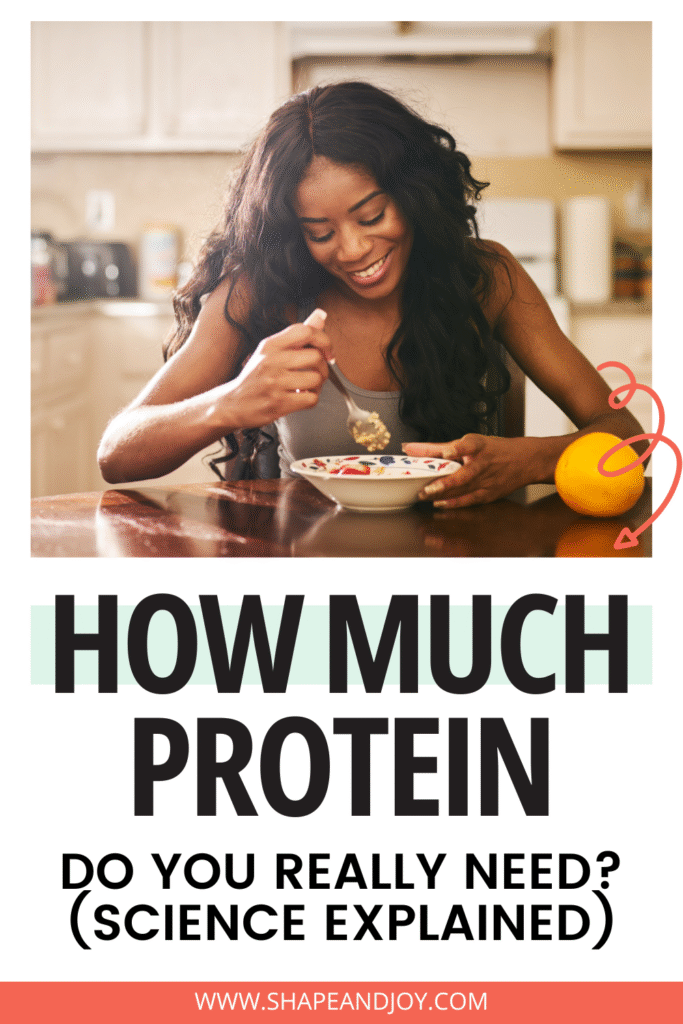
Here’s a stat that’ll make you blink: over 40% of women aren’t getting enough protein, and most don’t even realise it. You might be eating “healthy,” but if you’re still tired, snacky, and struggling to see progress, protein could be the missing link.
This post breaks down the real science behind how much protein your body actually needs, no intimidating maths, no bro-science, and definitely no “just eat more chicken.”
We’ll look at what protein does, how much is enough for your goals, and simple ways to hit your target through balanced, satisfying food.
Ready to cut through the confusion? Let’s make sense of your protein once and for all.
1. What Protein Actually Does in Your Body
Protein isn’t just about muscles, it’s the foundation for everything your body does. From repairing tissues and balancing hormones to building enzymes and supporting your metabolism, protein is your body’s multi-tasking powerhouse.
Think of it like scaffolding for your cells. Without enough of it, everything from your energy levels to your hair and skin can take a hit.
That’s why even if you’re not lifting heavy in the gym, you still need a solid daily dose.
It’s also your secret weapon against constant hunger. Protein keeps you full for longer, stabilises blood sugar, and helps prevent that 3pm biscuit raid. If you’ve ever wondered why high-protein meals are a cornerstone of every healthy eating plan, this is why.
If you’re serious about levelling up your nutrition habits, grab a wellness planner like this PLANBERRY Food Journal. Seeing your small wins on paper is ridiculously motivating.
2. The Science of How Much Protein You Really Need
Let’s tackle the million-pound question: how much protein do you actually need?
The official RDA (Recommended Dietary Allowance) is around 0.8 grams per kilo of bodyweight. But that’s the minimum to prevent deficiency, not what’s optimal for strength, metabolism, or body composition.
For women aiming to feel stronger, leaner, and more energised, research supports 1.6–2.2 grams per kilo of bodyweight.
That means if you weigh 70kg, your sweet spot is around 110-150g of protein per day – spread across meals and snacks.
Pro tip: Aim for around 25–30g of protein per meal, and you’ll naturally hit your target without obsessing over numbers.
I’m not into tracking forever, but a simple digital kitchen scale like Etekcity’s Slim Stainless Scale helps you realise how off we usually are, turns out, ‘a handful’ of chicken isn’t 30g of protein after all.
If you’re building a weekly meal plan, it’s worth checking out Meal Prep Ideas: High-Protein Lunches for the Week, it’s packed with realistic recipes that make hitting your daily goal easy (and tasty).
3. Common Myths That Mess Up Your Protein Goals
Let’s bust a few myths that refuse to die:
- “Too much protein damages your kidneys.” – Unless you already have kidney disease, this simply isn’t true. Studies show healthy kidneys handle a high-protein diet just fine.
- “Protein makes women bulky.” – Nope. You’d need testosterone-levels worthy of a Marvel superhero to get bulky. Protein helps build muscle, not bulk.
- “You only need protein if you lift weights.” – Wrong again – you need it for hormone health, recovery, and simply feeling good. Even if your workout is walking or yoga, protein supports lean tissue and a steady metabolism.
If you’re ready to see how this all translates into your daily routine, head to The Busy Woman’s Guide to Getting Enough Protein Every Day for foolproof strategies that fit your lifestyle.
📌 Pin this for later! ⬇
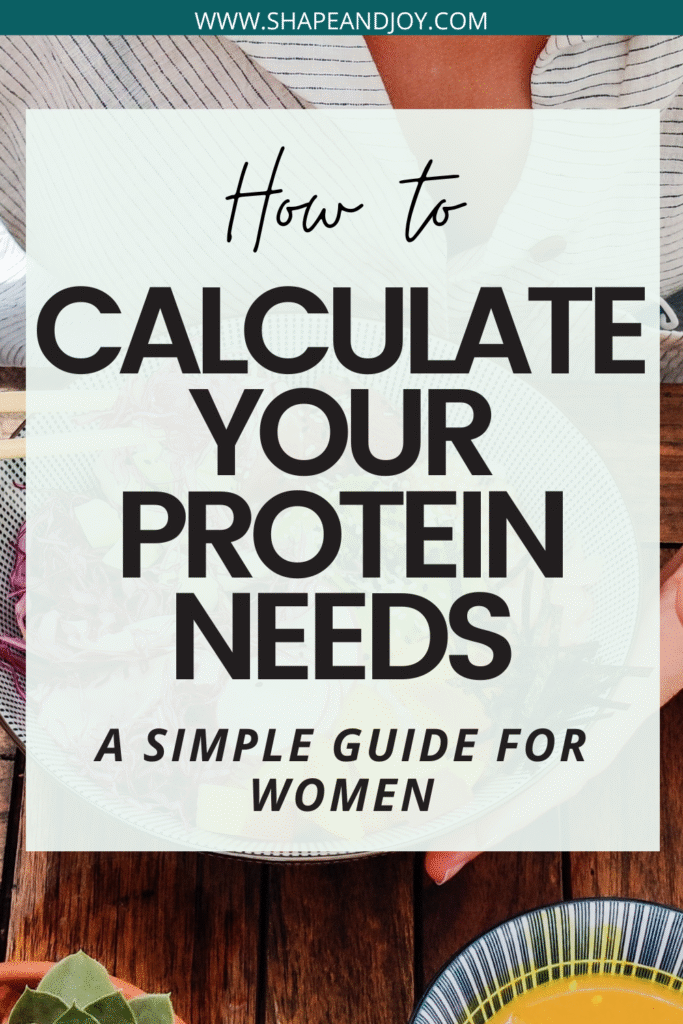
4. How to Calculate Your Personal Protein Target
Here’s how to work it out – no spreadsheet required:
- Take your bodyweight in kilograms.
- Multiply it by 1.6 to 2.2 (depending on your activity level).
- That number = your daily grams of protein.
Example: 65kg × 1.8 = 117g protein per day.
Split that over three meals and a snack, and you’re looking at about 30g of protein per meal – totally doable.
If numbers make your eyes glaze over, use this shortcut:
- Palm-sized portion = roughly 25g of protein.
- Two eggs + Greek yoghurt = about 20–25g.
- A scoop of vanilla protein powder = around 20g.
Once you’ve got your number, keep things interesting with variety, chicken, lentils, eggs, tofu, Greek yoghurt, or even protein soup recipes for cosy days.
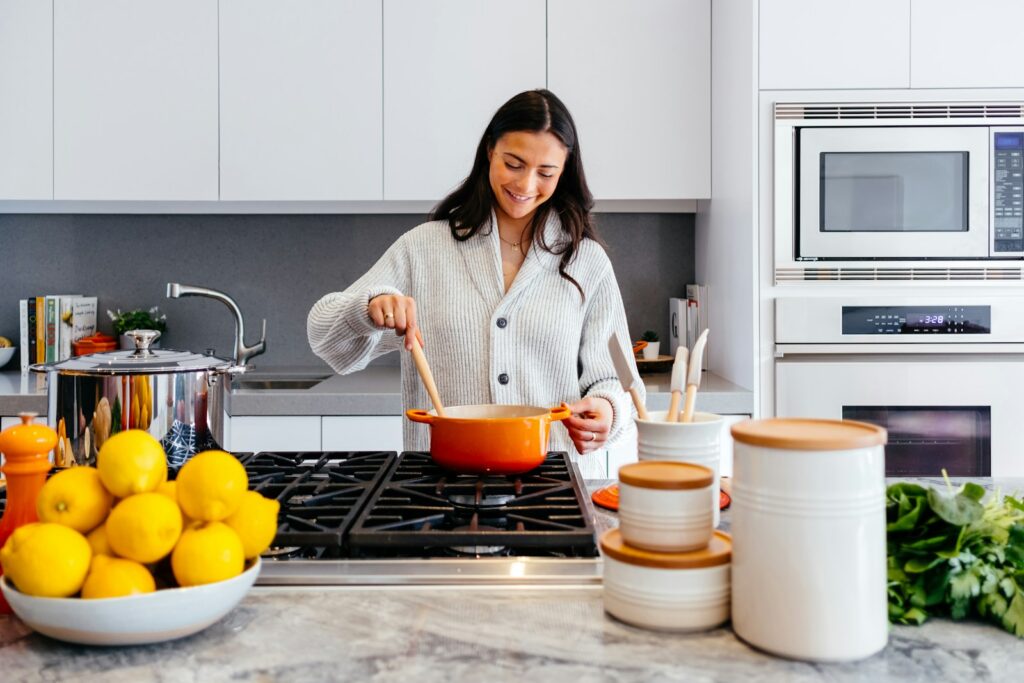
5. What to Do If You’re Not Hitting Your Target
Struggling to reach your protein goal? You’re not alone. Here’s how to sneak more in without turning every meal into a chicken breast:
- Add Greek yoghurt or cottage cheese to breakfast.
- Use high-protein wraps or pasta swaps.
- Keep protein snacks like boiled eggs, edamame, or jerky handy.
- Try simple high-protein meal prep on Sundays, a batch of lentil curry, turkey chilli con carne, or chicken salad meal prep boxes make life easier.
If you’re always on the move, stash a few Protein Bars or powder for your protein shakes. Snack goals, sorted.
Vegetarian or plant-curious? You’ll love Best Plant-Based Protein Sources (That Actually Taste Good) – it’s proof you don’t need meat to meet your protein needs.
Read These Next
- The Busy Woman’s Guide to Getting Enough Protein Every Day
- Meal Prep Ideas: High-Protein Lunches for the Week
- Best Plant-Based Protein Sources (That Actually Taste Good)
Conclusion
So, how much protein do you actually need? Probably more than you think, but it’s not as complicated as it sounds. A few mindful swaps and some smart meal prep go a long way.
Fuel your body like it deserves, and you’ll notice the difference, more energy, better focus, and meals that actually satisfy you.
Next Steps
“Small steps compound faster than perfection ever will.”
Read This Next: The Busy Woman’s Guide to Getting Enough Protein Every Day
📌 Pin this for later! ⬇
